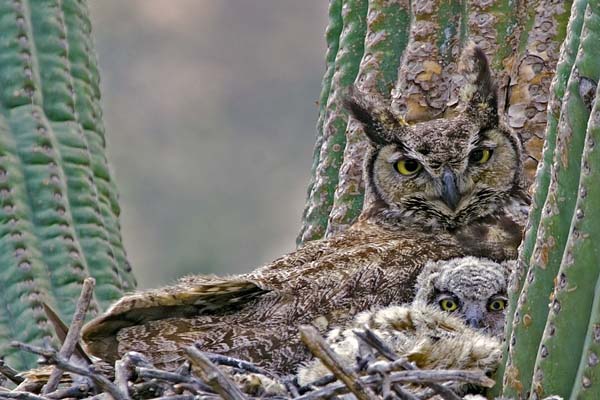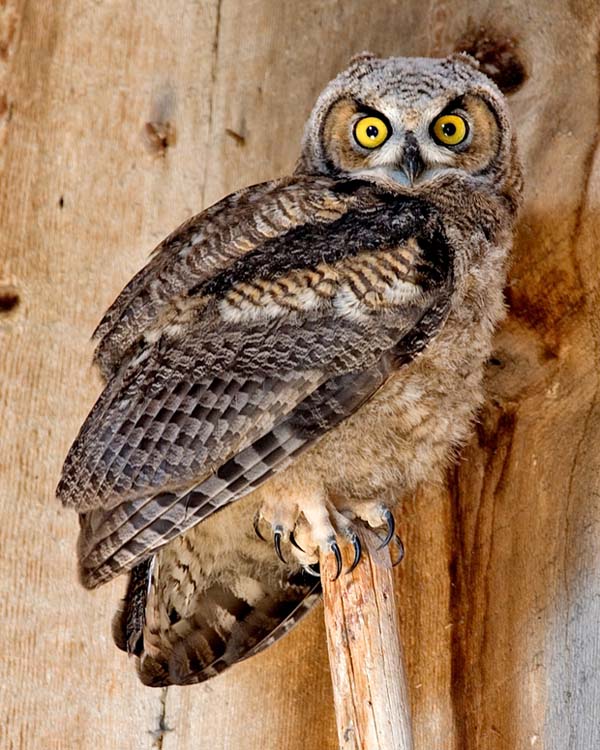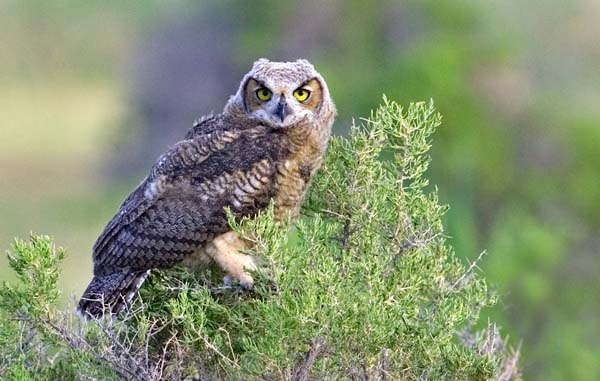Wildlife North America . com North American Animals - mamals, birds, reptiles, insects |
Great Horned Owl (Bubo virginianus)
Great Horned Owls, Catalina State Park, Near Tucson, Arizona Photograph by Alan And Elaine Wilson. Some rights reserved. (view image details) 
Great Horned Owl (Juvenile), Abandoned Barn, Summer Lake Wildlife Refuge, Oregon Photograph by Alan And Elaine Wilson. Some rights reserved. (view image details) 
Great Horned Owl (Juvenile), Near The Abandoned Barn, Summer Lake Wildlife Refuge, Oregon Photograph by Alan And Elaine Wilson. Some rights reserved. (view image details)
GREAT HORNED OWL FACTS
DescriptionThe Great Horned Owl is a large owl with distinctive ear tufts on its head. The body is brown and gray with dark bars. It has an pale tan to orange face disc, with white around the bill and throat. The eyes are yellow. The bill is dark. Males and females are similar, and immature birds are similar to adults. Size length 46cm - 63cm. Weight 0.9kg - 2.5kg. Environment open woodlands, farmland, forest, desert, suburban areas. Food mostly small mammals. Also eats birds, amphibians, reptiles, and invertebrates. Breeding The Great Horned Owl nests in tree hollows, cliffs, buildings, or on the ground. Usually uses a nest made by another bird species. Lays one to five (usually two) almost round white eggs. Range The Great Horned Owl is found across North America from northern Alaska, Canada, United States through Mexico to Nicaragua. Also found in South America. Classification
Relatives in same Genus Snowy Owl (B. scandiacus) Home | Mammals | Reptiles | Birds | Insects | Privacy Policy | Disclaimer | Contact Us |